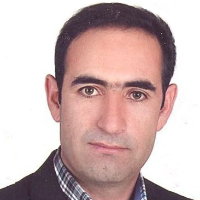Measuring the Impact of Urban Tourism Development on the Quality of Life in the Urban Areas Residents of Tabriz Metropolis
Author(s):
Article Type:
Research/Original Article (دارای رتبه معتبر)
Abstract:
Introduction Quality of life is a complex, multidimensional, and interdisciplinary concept that has been widely discussed in the 1960s by various disciplines of health sciences and social and economic sciences. Quality of life (QOL) refers to the public well-being of people and it is mainly understood through the concepts of objective and subjective well-being. Previous studies discussed the relationship between the quality of place and tourism in two aspects: scenes and amenities. First, the lifestyle carried by the scenes is the main attraction of cultural tourism. observers or observers are also known as tourists and tourists are immersed in their unique experience in the scene’s amenities like the quality of vision, theatre, parks, museums, restaurants, and shopping opportunities, which can be psychologically attractive to tourists, which is also due to the lifestyle offered by the amenities. By consuming facilities, people maintain a lifestyle that can reflect their identity. Tourists and long-term residents are known as welfare migrants with the motivation to consume welfare facilities. Cities full of amenities have become “cities of the festival “and “entertainment machines“. These cities not only absorb the creative class but also tourists. Therefore, it can be said that tourism is one of the parts that creates major economic, social, and cultural changes in the cities and nowadays is a dynamic economic industry, which plays a key role in improving the quality of life of citizens. The purpose of this study was to investigate the effects of the development of urban tourism on the quality of life of citizens in urban areas of Tabriz.Materials and MethodsThe present study is an applied research in terms of goal, descriptive - -correlation in terms of research method, and survey approach in terms of data collection. The statistical population of the study consisted of all urban areas of Tabriz metropolitan (1.773.033 people) which was determined as the sample size of 384 people based on Cochran’s formula. The method of distribution of the questionnaires was cluster random based on population density in each district. To collect data, two methods of library and documentary (questionnaire) were used. The measurement tool included two quality-of-life questionnaires by Weir and Sherbon (1992) with 25 items and urban tourism development developed by a Researcher with 15 items. It should be noted that the professors of the research confirmed the validity of the questionnaire. In this research, the reliability (determination of trust) of the questionnaire or its reliability by using Cronbach’s alpha was performed in the SPSS version 24. Cronbach’s alpha test of the quality-of-life questionnaire with 50 items was equal to (0.869) and Cronbach’s alpha test of the tourism development questionnaire with 23 items was obtained (0.876). This shows the reliability of the research questionnaires. The data were analyzed using SPSS software and geographic information system (GIS) software. Correlation and regression statistical tests were the applied statistical tests. To study the spatial assessment of tourism development and its effects on the quality of life of citizens, 15 factors affecting tourism development were prepared in raster format. All of the nominal criteria mentioned in the study, using GIS and raster maps, were converted to spatial dimensions, and raster maps were generated to model the potential of urban tourism. To analyze spatial data, quantitative, computational, and software, methods have been used. Considering that the unit of each of the different layers is unique and different from each other, the standardization process of factors based on each effect on increasing or decreasing the potential of tourism in the range between 1 and 5 has been standardized.FindingsAccording to the research findings, the correlation coefficient between urban tourism development factors with the quality of life in ten metropolitan areas of Tabriz is 0.235, and at a significant level ( p < 0.05 ) indicates that there is a significant relationship between these two variables. In addition, the correlation coefficient of urban tourism development with the quality of life in urban areas of Tabriz is equal to 588 indicating the existence of a correlation between these two variables. Therefore, it can be said that with increasing the rate of urban tourism development, the quality of life in the urban areas of Tabriz metropolis increases.The results also showed that the correlation coefficient of social, economic, environmental, and physical dimensions of urban tourism development with the level of quality of life in urban areas of Tabriz metropolis is 0.376, 0.466, 0.265, and 0.292 respectively, which shows the existence of correlation between the two mentioned variables. Hence, it can be concluded that with increasing the amount of urban tourism development dimensions, the quality of life in urban areas of Tabriz metropolis increases. The impact of urban tourism development on the quality of life in urban areas of Tabriz is due to the economic dimension. Finally, the results showed that the correlation coefficient of urban tourism with the level of quality of life in ten metropolitan areas of Tabriz is 0.293, 0.376, 0.284, 0.402, 0.384, 0.102, 0.417, 0.296, 0.098, and 0.412 respectively, which indicates the existence of a correlation between these two variables to the dividing areas. according to the research findings, districts 6 and 9 have the lowest level of quality of life, and districts 1, 2, 3, 4, 5, 7, 8, and 10 have the highest level of quality of life in the ten districts of Tabriz.ConclusionUndoubtedly, tourism development should be based on the process of comprehensive planning to improve the quality of life of residents. National policymakers are required to implement adequate measures and regulations for the development of urban tourism to improve services and tourism activities that will eventually be reflected in the quality of life of residents. This study highlights the importance of local community perception, community attachment, and perceived life quality to destination managers responsible for planning and developing future tourism projects. From the point of view of residents, different indicators of quality of life have a strong positive relationship with tourism development. This indicates the high perception of citizens from the level of quality of life in Tabriz metropolitan. The results showed that there is a significant relationship between urban tourism development factors with the quality of life in ten districts of Tabriz. Development of urban tourism with a variance of 34.4 % has positive effects on the quality of life in urban areas of Tabriz metropolitan. It seems that the impact of urban tourism development on the quality of life in urban areas of Tabriz is due to the economic dimension with a variance of 26.4 %. The development of urban tourism affects the quality of life in districts 1, 2, 3, 4, 5, 7, 8, and 10.
Language:
Persian
Published:
نشریه اقتصاد و برنامه ریزی شهری, Volume:4 Issue: 3, 2024
Pages:
142 to 157
magiran.com/p2669148
دانلود و مطالعه متن این مقاله با یکی از روشهای زیر امکان پذیر است:
اشتراک شخصی
با عضویت و پرداخت آنلاین حق اشتراک یکساله به مبلغ 1,390,000ريال میتوانید 70 عنوان مطلب دانلود کنید!
اشتراک سازمانی
به کتابخانه دانشگاه یا محل کار خود پیشنهاد کنید تا اشتراک سازمانی این پایگاه را برای دسترسی نامحدود همه کاربران به متن مطالب تهیه نمایند!
توجه!
- حق عضویت دریافتی صرف حمایت از نشریات عضو و نگهداری، تکمیل و توسعه مگیران میشود.
- پرداخت حق اشتراک و دانلود مقالات اجازه بازنشر آن در سایر رسانههای چاپی و دیجیتال را به کاربر نمیدهد.
In order to view content subscription is required
Personal subscription
Subscribe magiran.com for 70 € euros via PayPal and download 70 articles during a year.
Organization subscription
Please contact us to subscribe your university or library for unlimited access!



